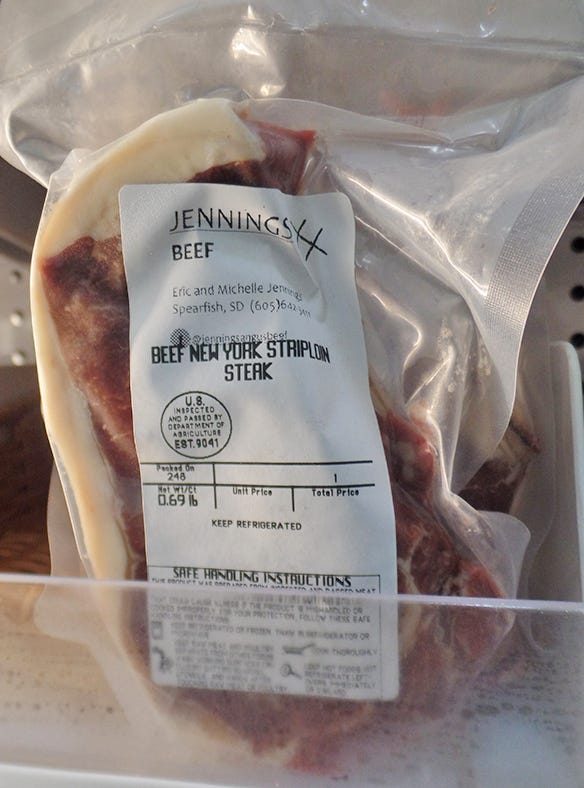November 19, 2018

Eric Jennings, Spearfish, S.D., is a rancher who has learned a lot about consumers. He sells grass-fed and grain-finished beef direct to consumers.
Jennings and his wife, Michele, started direct marketing beef about 10 years. At first, they sold quarters and halves to friends and family. Eventually they developed their own brand — Jennings Angus Beef — and now have their beef in the Red Barn Farmers Market retail store and Good Earth Natural Foods, both in Spearfish.
While Jennings still refers to the venture as a "hobby experiment," he is committed to continuing to feed the local foods movement and anticipates sales will continue to grow. Jennings ran a large commercial cow herd until a few years ago, when he transitioned his U.S. Forest Service grazing permit to another rancher. With his smaller cowherd he is now focused on direct marketing as a way to get a higher return from his calf crop.
Marketing insights
Jennings' top four tips about direct marketing meat are:
1. Rethink portion sizes. "A 3 to 4-pound roast is generally too big," he says. Many buyers seeking "local beef" in retail stores are usually buying for one to two people and they may not want leftovers. Additionally, at an average of $8 per pound for grass-fed beef, larger portion sizes can be cost prohibitive.
2. Be prepared for consumer questions. Often, buyers interested in locally-raised are interested in the story behind the ranch and how they animals are raised. From his experience, consumers have been especially interested in three common questions: Was the animal fed hormones? Was the animal given antibiotics? Was the animal fed corn? Jennings notes that with his 50-head cowherd, cattle are raised naturally (no hormones, no antibiotics). He does offer both grain-finished and grass-finished beef depending on consumer preferences. The Jennings use Angus genetics, which is recognized by many consumers as a source of high quality meat breed.
 LOCAL BEEF: Eric and Michele Jennings put their name and phone number on their meat packages.
LOCAL BEEF: Eric and Michele Jennings put their name and phone number on their meat packages.

3. Recognize grass-finished beef takes longer to get to market. Jennings says marketing local beef can produce a higher gross revenue, however your costs to produce that beef may also be higher. For instance, grass-finished calves are typically two years of age before they reach an ideal harvest weight, which requires feeding them a year longer than grain-finished cattle. He supplements grass-fed animals with alfalfa or forage hay during the winter, and typically harvests in late summer to early fall
4. Find opportunities to connect with consumers. Jennings has gotten involved in the Spearfish Chamber of Commerce to help increase awareness for Jennings Angus Bee. He and Michelle even host an afternoon at their ranch each spring for the Spearfish leadership class to learn more about local agriculture. The Jennings' have also offered beef samples in the retail stores to provide opportunities for consumers to try the beef and ask whatever questions they may have. They have a Facebook page to share photos and information about their ranch. They are involved in state beef industry events; and they've collaborated with Black Hills State University, which has established a food hub to connect local producers with interested consumers and restaurants.
Grass- vs grain-finished beef
The Jennings offer both grass- and grain-finished beef by keeping groups of animals separate and feeding them differently through the finishing phase. While some consumers — and producers — are very vocal about preferences for certain production methods (organic, natural, and/or grass-finished), Jennings won't take sides. He says consumers deserve choices.
"I'm here to promote meat. I won't promote one production method to the detriment of another," he says.
Gordon writes from Whitewood, S.D.
About the Author(s)
You May Also Like






